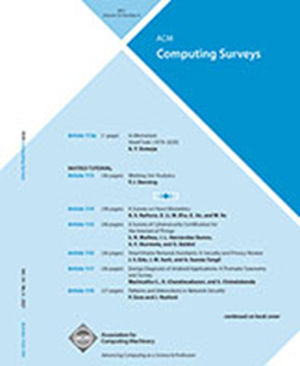图层面学习的现状与潜力
IF 23.8
1区 计算机科学
Q1 COMPUTER SCIENCE, THEORY & METHODS
引用次数: 0
摘要
图在表示化合物、蛋白质和社交网络等关系数据方面具有卓越的能力。因此,将一组图作为输入的图级学习已被应用到许多任务中,包括比较、回归、分类等。学习图集的传统方法严重依赖于手工创建的特征,例如子结构。虽然这些方法具有良好的可解释性,但由于无法解决图同构问题,因此往往会遭遇计算瓶颈。相反,深度学习通过自动提取特征并将图编码为低维表示,帮助图级学习适应图规模的不断扩大。因此,这些深度图学习方法取得了许多成功。然而,从传统学习到深度学习方法,还没有一份全面的调查报告对图级学习进行了回顾。本文填补了这一空白,并将具有代表性的算法归纳为一个系统的分类法,涵盖传统学习、图级深度神经网络、图级图神经网络和图池化。此外,文章还对这四个分支的方法在其发展过程中的演变和相互作用进行了深入分析。随后,简要回顾了基准数据集、评估指标和常见的下游应用。最后,调查报告对这一蓬勃发展领域的 12 个当前和未来方向进行了深入讨论。本文章由计算机程序翻译,如有差异,请以英文原文为准。
State of the Art and Potentialities of Graph-level Learning
Graphs have a superior ability to represent relational data, like chemical compounds, proteins, and social networks. Hence, graph-level learning, which takes a set of graphs as input, has been applied to many tasks including comparison, regression, classification, and more. Traditional approaches to learning a set of graphs heavily rely on hand-crafted features, such as substructures. While these methods benefit from good interpretability, they often suffer from computational bottlenecks as they cannot skirt the graph isomorphism problem. Conversely, deep learning has helped graph-level learning adapt to the growing scale of graphs by extracting features automatically and encoding graphs into low-dimensional representations. As a result, these deep graph learning methods have been responsible for many successes. Yet, no comprehensive survey reviews graph-level learning starting with traditional learning and moving through to the deep learning approaches. This article fills this gap and frames the representative algorithms into a systematic taxonomy covering traditional learning, graph-level deep neural networks, graph-level graph neural networks, and graph pooling. In addition, the evolution and interaction between methods from these four branches within their developments are examined to provide an in-depth analysis. This is followed by a brief review of the benchmark datasets, evaluation metrics, and common downstream applications. Finally, the survey concludes with an in-depth discussion of 12 current and future directions in this booming field.
求助全文
通过发布文献求助,成功后即可免费获取论文全文。
去求助
来源期刊

ACM Computing Surveys
工程技术-计算机:理论方法
CiteScore
33.20
自引率
0.60%
发文量
372
审稿时长
12 months
期刊介绍:
ACM Computing Surveys is an academic journal that focuses on publishing surveys and tutorials on various areas of computing research and practice. The journal aims to provide comprehensive and easily understandable articles that guide readers through the literature and help them understand topics outside their specialties. In terms of impact, CSUR has a high reputation with a 2022 Impact Factor of 16.6. It is ranked 3rd out of 111 journals in the field of Computer Science Theory & Methods.
ACM Computing Surveys is indexed and abstracted in various services, including AI2 Semantic Scholar, Baidu, Clarivate/ISI: JCR, CNKI, DeepDyve, DTU, EBSCO: EDS/HOST, and IET Inspec, among others.
 求助内容:
求助内容: 应助结果提醒方式:
应助结果提醒方式:


